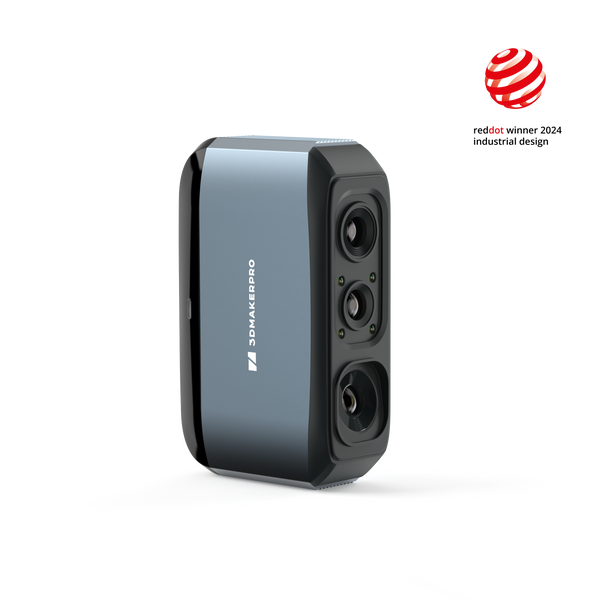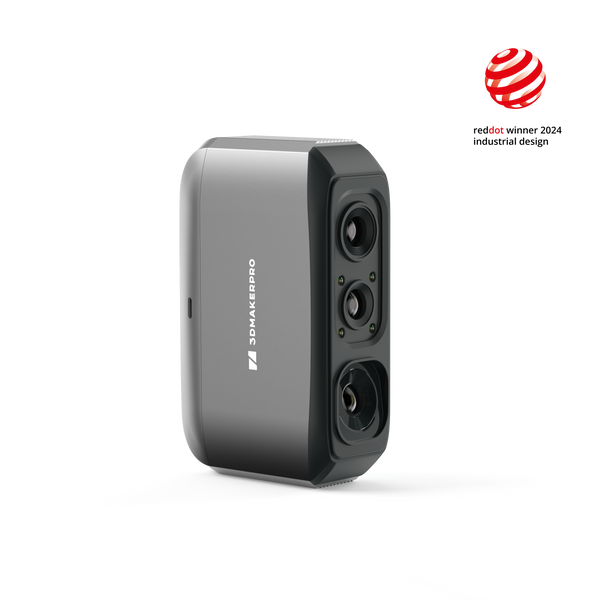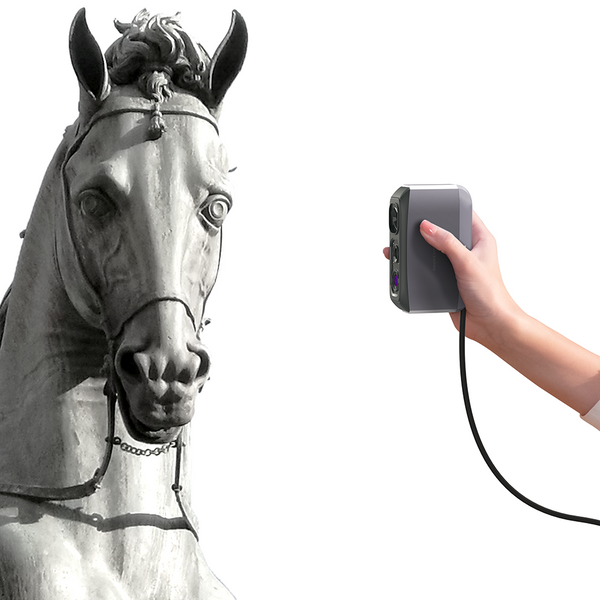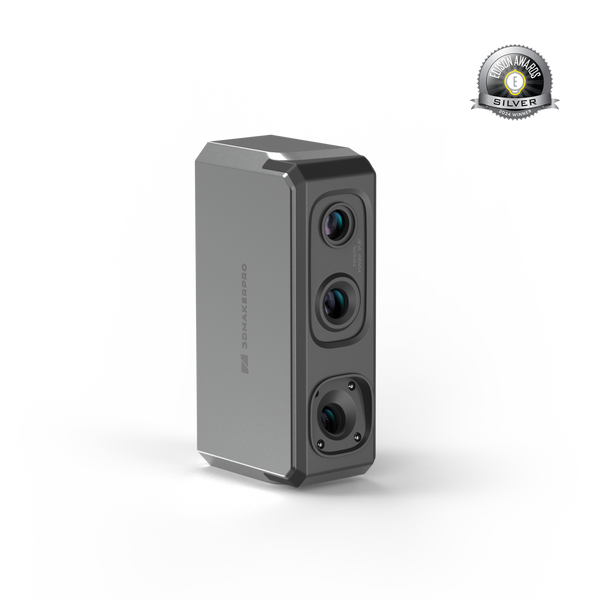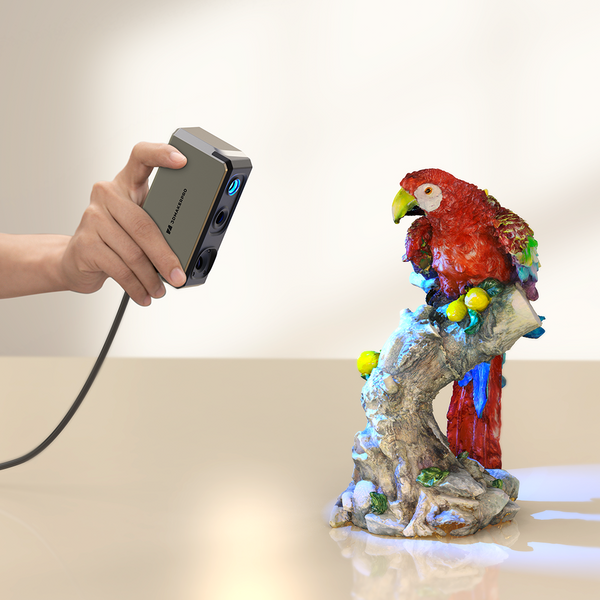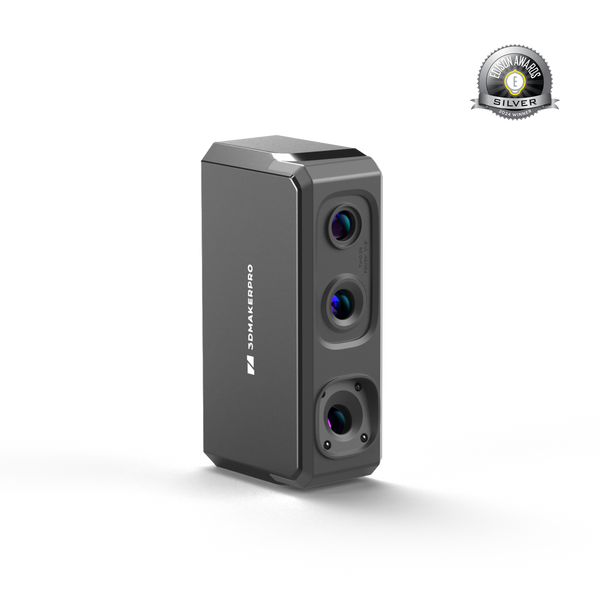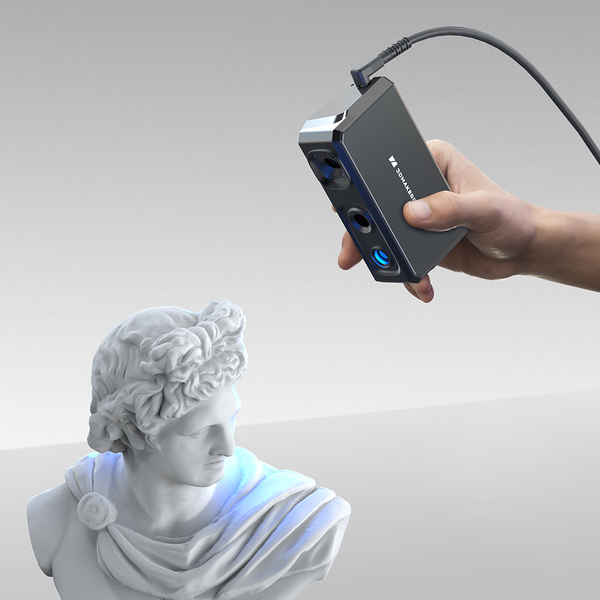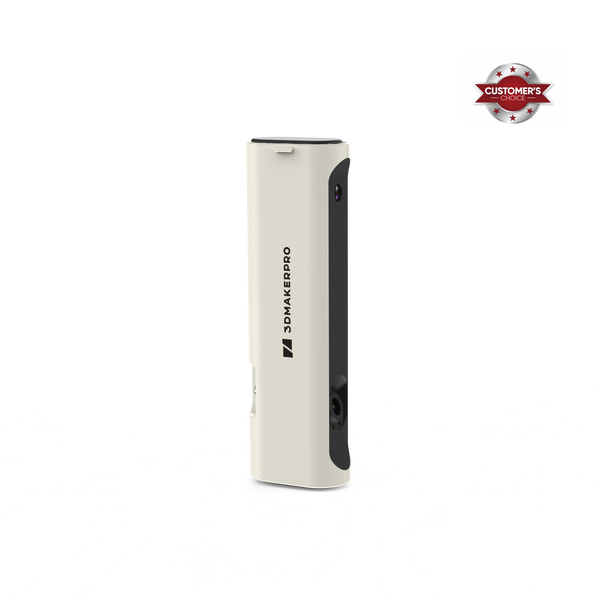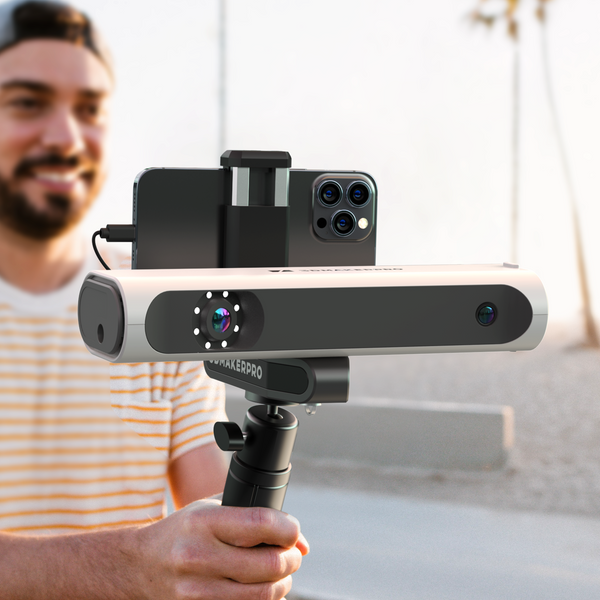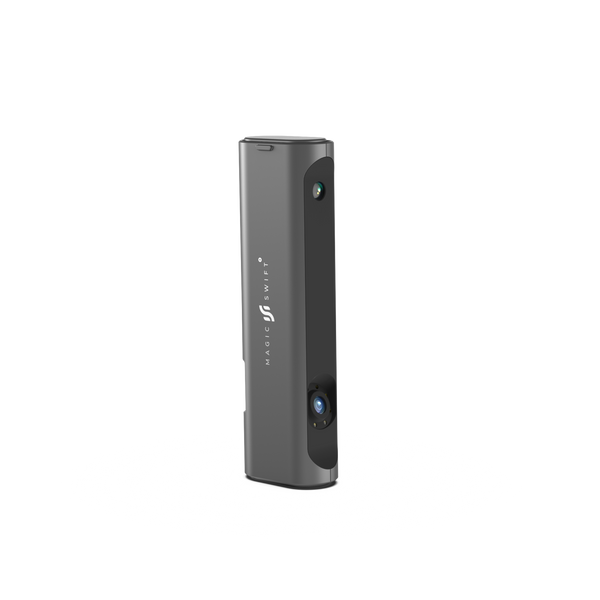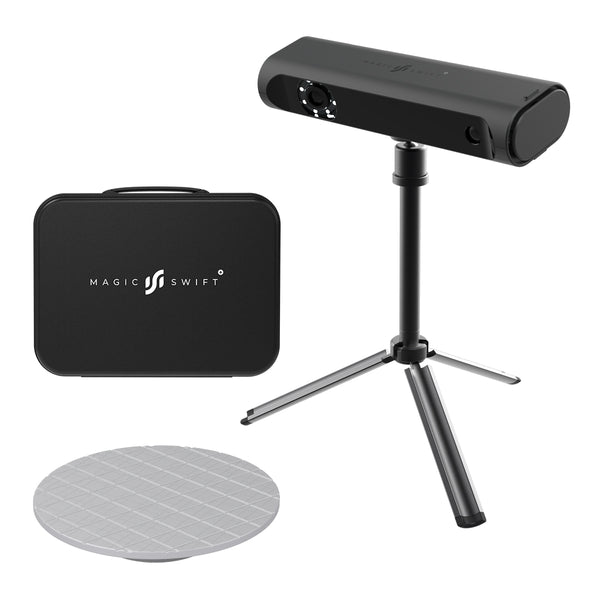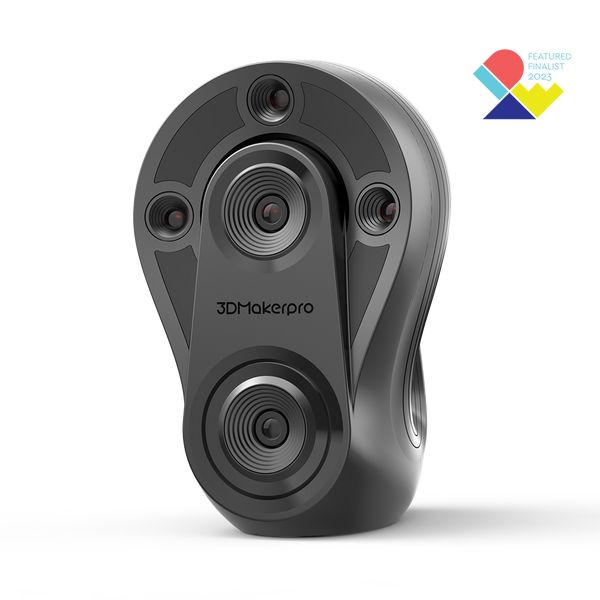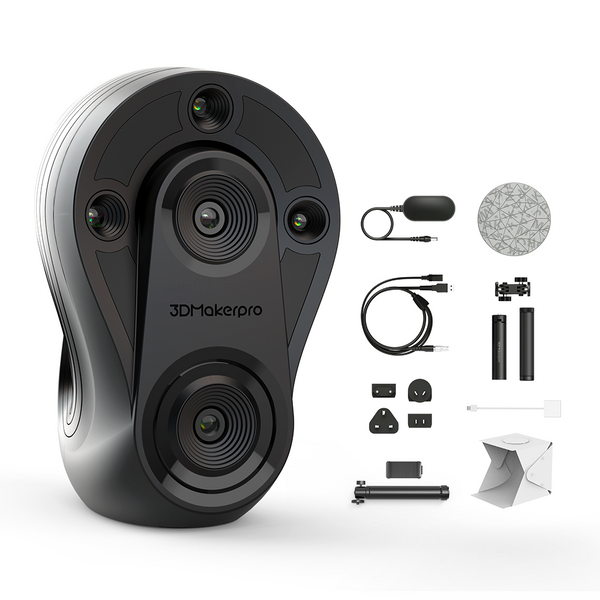Portable 3D Scanner
Seal 3D Scanner
Seal Lite 3D Scanner
Lynx 3D Scanner
Mole 3D Scanner
Magic Swift Plus 3D Scanner
Whale 3D Scanner
Find your perfect scanner
|
Moose
|
Seal
|
Lynx
|
|
Accuracy
0.03mm
|
Accuracy
0.01mm
|
Accuracy
0.10mm
|
|
Resolution
0.07mm
|
Resolution
0.05mm
|
Resolution
0.30mm
|
|
Color scanning
24-bit color texture
|
Color scanning
24-bit color texture
|
Color scanning
Extended support
|
|
Light source
Blue LED
|
Light source
Blue LED
|
Light source
NIR
|
|
Work distance
150-400mm
|
Work distance
180-280mm
|
Work distance
400-900mm
|
|
Typical object sizes
15-1500mm
|
Typical object sizes
10-300mm
|
Typical object sizes
100-2000mm
|
|
Dimensions
120×60×35mm
|
Dimensions
110×60×35mm
|
Dimensions
255×75×48mm
|
|
Weight
280g
|
Weight
254g
|
Weight
800g
|
1. What is the best budget 3D scanner for beginners?
The best budget 3D scanner for beginners is one that balances affordability and ease of use. 3DMakerpro offers entry-level scanners like the Moose and Moose Lite, which are compact, portable, and provide accurate scanning for 3D printing, modeling, and hobby projects. These are widely recommended in 3D scanner reviews for their value.
2. Is a 3D scanner useful for education and research?
Absolutely. The best affordable 3D scanners from 3DMakerpro are perfect for educations and research labs. Students can use them for 3D printing projects, design learning, cultural preservation, and even biology studies. Their portability and budget-friendly pricing make them a top choice for education.
3. What is the difference between a 3D laser scanner and a structured-light 3D scanner?
A 3D laser scanner (like the Eagle LiDAR) uses laser beams to capture precise measurements over large distances, ideal for architecture, surveying, and outdoor scanning. Structured-light scanners (like Seal, Moose, and Mole) project patterns of light to capture fine details with higher accuracy, making them the best cheap 3D scanners for design, reverse engineering, and 3D printing.
4. What are the benefits of using a 3D scanner over traditional measurement methods?
A 3D scanner captures millions of data points in seconds, delivering precise digital models that traditional calipers or rulers can't achieve.
- Versatile Applications: From 3D printing and prototyping to art preservation, education, automotive parts, and 3D scanner reviews, our scanners cover every field with ease.
- High Accuracy & Detail: With resolutions as fine as 0.01mm, our scanners deliver industry-level precision, ensuring every detail is captured with clarity.
- Portable & Easy to Use: Designed for creators on the go, our handheld and budget-friendly scanners make scanning simple, fast, and reliable—even for beginners.
5. Why Choose 3DMakerpro?
3DMakerpro is trusted worldwide as a leader in affordable and professional 3D scanning solutions. We specialize in delivering the best cheap 3D scanners without compromising quality, making professional-grade technology accessible to hobbyists, educators, and businesses alike. Combined with competitive pricing, outstanding support, and continuous innovation, 3DMakerpro ensures that every user—from hobbyist to professional—can capture reality with confidence. Order online today and start your journey into the world of 3D scanning!
Recommended Articles
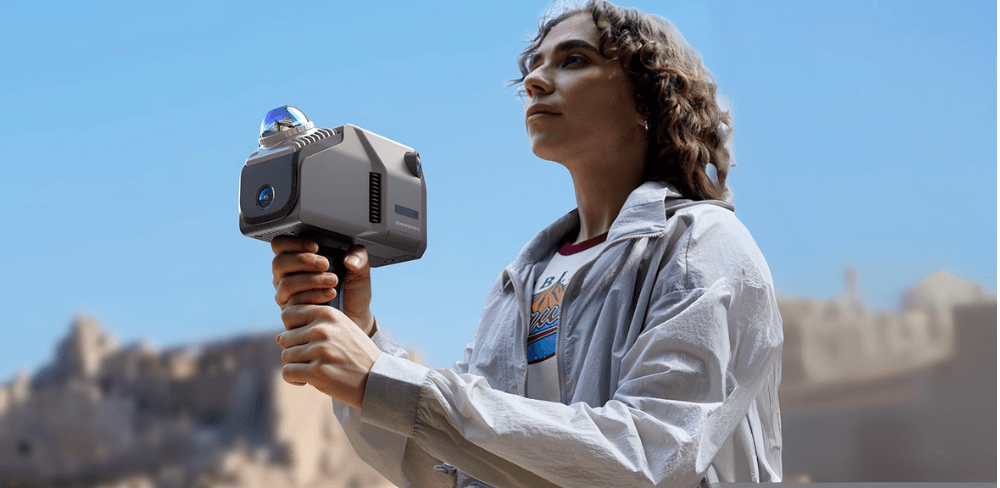
What is an IMU and Why Does It Matter in 3D Scanning
The Inertial Measurement Unit (IMU) boosts its accuracy. This blog discusses the IMU's role and its importance with the Eagle LiDAR Scanner.

Using a 3D Scanner to Bring Your Favorite Pokémon to Life
This guide covers using a 3D scanner, like the Moose 3D Scanner, to create physical versions of Pokémon's iconic characters.

Best 3D Image Scanners for Artists, Designers, and Engineers
3D image scanners are essential for artists, designers, and engineers, turning physical objects into digital models. The Lynx 3D Scanner meets their needs.


